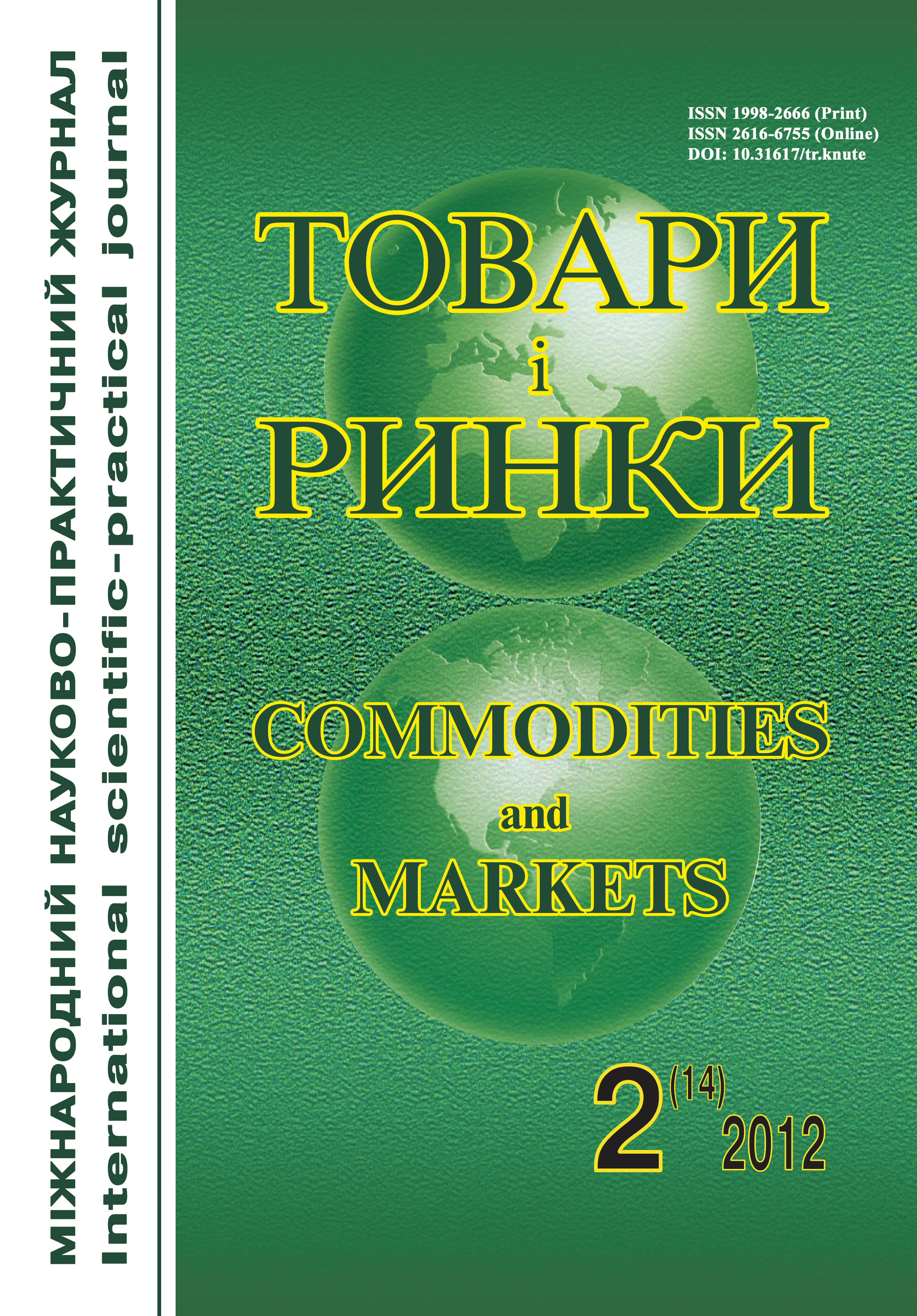The quality of flour made of wheat germinated in sea salt solution
Keywords:
flour, edible sea salt, germination energy, nutritional valueAbstract
Improvement of traditional technologies of culinary products by means of use of functionally purposed additives is an actual scientific problem. Flour is an everyday-used product, which has a lower nutritive and biological value in comparison with whole grains. It happens because outer grain shell which is rich in minerals, vitamins and dietary fibers, is separated during grinding process.
The problem of flour products with higher nutritional value is highlighted in a number of scientific publications. An important task of the milling industry is also an improvement of mineral content of grain after harvest.
The purpose of the scientific work is quality assessment of wheat flour, germinated in a sea salt solution.
Previous studies have established that rational concentration of salt in the solution is 2 % (grain germination energy is 93.9 %, swelling degree – 41.6 %). To receive flour, germinated grains were laid out on sieves and dried at a temperature of 65–70 °C in a moisture tester Elviz-2C in a hygrometer till grain moisture content is 14.5 %, then it was ground to a particle size of 40–60 microns and sieved.
Amino acid, fatty acid and carbohydrate content of germinated wheat flour were assessed. It is found that the fraction of essential amino acids increased by 5.7 % of their total content relatively to the control grain. The fraction of saturated and monounsaturated fatty acids increased by 7.7 and 5.0 % of their total content in the germinated grain flour in comparison with the traditional product, respectively. Starch content in the experimental product decreased by 4.8 %, but mono- and disaccharides and dietary fibers –increased by 3.8 and 12.3 times in comparison with wheat flour, respectively. The use of sea salt solution in the technology for grain germination allowed to enrich the mineral content of the developed product: the content of magnesium, calcium, potassium, iron, zinc, copper increased by 14.8, 7.5, 3.0, 4.7, 4.2, 6.3 times, respectively.
Experimental studies have established that sea salt solutions can be used as an environment for wheat germination in order to increase nutritional and biological value of whole grain flour. It is set that this flour contains more amino acids, fatty acids and minerals in comparison with a traditional product. The proposed method of grain germination can be recommended for implementation in grain processing industry enterprises to obtain flour of higher nutritional value.
References
Бондар І. П. Розроблення технології хліба з борошняних сумішей підвищеної харчової цінності : автореф. дис. на здобуття наук. ступеня канд. техн. наук : спец. 05.18.01 "Технологія хлібопекарських продуктів та харчових концентратів" / І. П. Бондар ; Нац. ун-т харчових технологій. — К. : НУХТ, 2003. — 20 с.
Дейниченко Г. В. Дослідження процесу ферментативного гідролізу білка борошняних формованих виробів / Г. В. Дейниченко, Т. О. Колісниченко // Обладнання та технології харчових виробництв : темат. зб. наук. пр. — Донецьк : ДонДУЕТ, 2003. — Вип. 9. — С. 168—172.
Использование пищевого костного полуфабриката (ПКП) в технологии макаронных изделий / [Верешко Н. В., Головко Н. П., Чуйко А. Н., Чуйко М. Н.] // Вісн. Харк. держ. техн. ун-ту сільськ. госп-ва ім. П. Василенка : зб. наук. пр. — Х., 2003. — Вип. 22. — С. 127—132.
Моргун В. А. Пищевая ценность композиционных смесей из муки различных зерновых культур / В. А. Моргун, Д. А. Жигунов, О. С. Крошко // Хранение и переработка зерна. — 2005. — No 11. — С. 20—21.
Шаран А. В. Розроблення технології оброблення пророслих зерен та рекомендацій щодо їх використання : автореф. дис. на здобуття наук. ступеня канд. техн. наук : спец. 05.18.02 "Технологія зернових, бобових, круп’яних продуктів та комбікормів" / А. В. Шаран ; Нац. ун-т харч. технологій. — К. : НУХТ, 2004. — 19 с.
Сімахіна Г. О. Використання високомінералізованої зернової сировини у вирішенні проблеми мікроелементної нестачі / Г. О. Сімахіна, Т. І. Миколів // Наукові пр. Нац. ун-ту харч. технологій. — К. : НУХТ, 2009. — No 28. — С. 10—13.
ГОСТ Р 51574–2000. Соль поваренная пищевая. Технические условия. — Введ. 2000—03—23. — М. : ИПК : Издательство стандартов, 2000. — 11 с.
Кравченко М. Ф. Структурно-механічні властивості прісного тіста з борошна пророщеного зерна пшениці / М. Ф. Кравченко, М. Ю. Криворучко, А. В. Антоненко // Міжнар. наук.-практ. журн. "Товари і ринки". — 2012. — No 1. — С. 82—88.



